The Psychic (1977)
Directed by: Lucio Fulci
Written by: Dardano Sacchetti, Lucio Fulci, Roberto Gianviti
Starring: Gabriele Ferzetti, Gianni Garko, Jennifer O'Neill, Marc Porel
AKA SETTE NOTE IN NERO, SEVEN BLACK NOTES, SEVEN NOTES IN BLACK, MURDER TO THE TUNE OF SEVEN BLACK NOTES, DEATH TOLLS SEVEN TIMES
Italy
AVAILABLE ON BLU-RAY AND AND ON-DEMAND: 9TH AUGUST, from SHAMELESS FILMS
RUNNING TIME: 92 mins
REVIEWED BY: Dr Lenera, Official HCF Critic
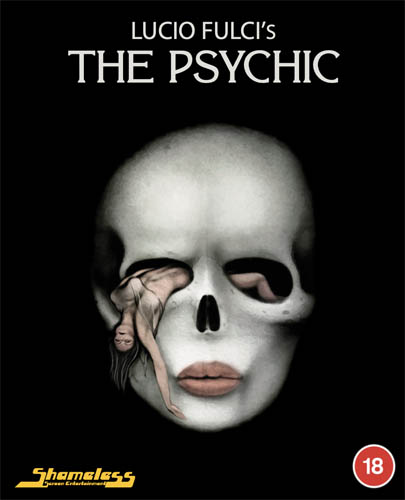
In 1959 Dover, England, a woman commits suicide by leaping from a cliff. At the same time, her daughter Virginia, living in Florence, Italy sees this death – which is actually of her mother – in a vision. 18 years later, an adult Virginia lives near Rome, and has married rich Italian businessman Francesco Ducci. When Ducci leaves on a business trip, Virginia experiences more visions including an old woman being murdered. When visiting an abandoned mansion in Siena she plans to renovate, she finds a room with many of the objects in her visions and then a skeleton walled up, evidence of a murder committed many years ago. The police link Ducci to the crime and arrest him, but then Virginia sees the supposed victim alive and well…
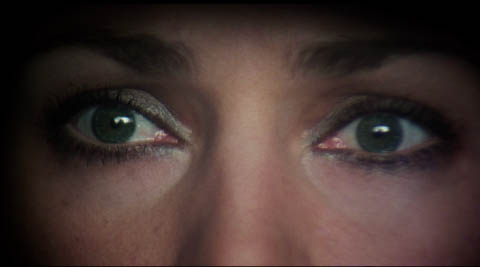
Quentin Tarantino thinks that this is the best film to come from Lucio Fulci, the filmmaker who tends to rank slightly below the other two members of the Holy Trinity of Italian horror Mario Bava and Dario Argento though was the most diverse out of the three. Sometimes I agree with Tarantino and sometimes I don’t, but I’m always interested in hearing his views. I first saw The Psychic several decades ago on an Italian language copy with no subtitles and it seemed to me to be essentially a very simple tale told in a convoluted way despite being very well shot indeed. But each viewing, especially when an English language version became available, made the film rise in my estimation. Even now, I don’t think that Fulci is right, but The Psychic certainly ranks pretty high in his resume and should perhaps be the first of his films one should showe to those who think that Fulci was just interested in gore, since it has very little. The story still seems stretched out, though of course that’s not automatically a flaw and this is certainly one of the more interesting examples of the gialli that were made at a time when the form had sharply declined in popularity and some filmmakers were fighting a losing battle to keep it alive by varying the format. This one doesn’t have the usual array of murder set pieces, but it’s certainly a most intriguing and clever mystery that brings in elements of a certain 1973 picture which I’m not going to mention because it may give things away, and which is crafted with considerable care by a director who later became rather careless. It probably deserves to be better known, though its talkiness, downbeat nature and bleak fatalism mean that it’ll never become one of his more popular pictures.
It was initially based on a 1972 novel called Terapia mortale [Deadly Therapy] by Veiri Razzini, and wasn’t originally intended to be directed by Fulci at all; Alberti Pugliese was initially given the job to direct what was called both Pentagramma in nero [Black Pentagram] or Sinfonia in nero [Black Symphony]. Veteran giallo screenwriter Ernesto Gastaldi wrote a treatment, but the project was in development limbo for over a year as producer Luigi De Laurentiis wasn’t sure what kind of film he wanted it to be. Eventually Fulci, probably because of the quality of his earlier gialli, was brought in with writers Roberto Gianviti who’d collaborated with Fulci on several previous films and Dardano Sacchetti who would be Fulci’s main screenwriter for the next few years, resulting in hardly any of the novel remaining in the film, while Gastaldi went uncredited. It was shot under the working title Dolce come morire [Sweet As Dying], with little studio work, being filmed chiefly at Arezzo, Siena in Italy, with some brief shooting in Dover. The Italian release released met with little interest and the film was only sporadically released overseas, perhaps partly due to its relative shortage of exploitable elements. It didn’t get to the UK in the cinema or on video and its first official release is this one from Shameless. It was distributed theatrically in the US, but for some reason this version omitted the opening sequence. Fulci may not have minded much soon after though – it was said opening sequence that caused producer Fabrizio de Angelis to choose him to direct Zombie Flesh Eaters, the film that finally gave him some worldwide fame – or should that be notoriety?
I’m talking about the sight of a woman’s head being bashed several times on a cliff when a woman commits suicide, something which is in fact a recycling of the finale of Don’t Torture A Duckling. Again, the head of the dummy used isn’t exactly realistic, but, what with the excellent editing in the lead-up so it really does look like young Virginia is present at the ghastly occurrence despite actually being in another country, it does get the film off to a highly dramatic start. I must say right now though that it’s a bit of a misleading opening, because there’s only a small amount of blood and violence in the rest of the film, a film which I’m very surprised has been given an ’18’ rating by the BBFC; it’s really very misleading. It’s immediately followed by a soppy love song sung by a ‘Linda Lee’ which really does seem out of place, though some other Italian films of the period did the same thing, and I have to say it’s a rather pleasant tune. The fragments of Virginia’s vision form a dreamlike mosaic and are edited together with some rhythm – an old woman murdered, a red-dominated room, a wall being built, the limping legs of the murderer, a letter hidden beneath a statue etc. And you have to admire the cheek of a giallo that throws most of its clues at its heroine and us all in one go. One thing that soon becomes apparent is how good Jennifer O’ Neill is in this film. While undoubtedly a beauty and the provider of much lovely dreaming to myself and I’m sure many other younger teenagers who saw Summer Of ’42 and wished that she would be the one to take our virginity away just like she took away Hermie’s in the film, she’s not somebody one tends to rate much as an actress. Yet her odd haunted quality suits this film and she shows her character’s confusion, fear and eventual realisation of the dreadful truth quite convincingly. What a shame that one of her best performances is so little seen.
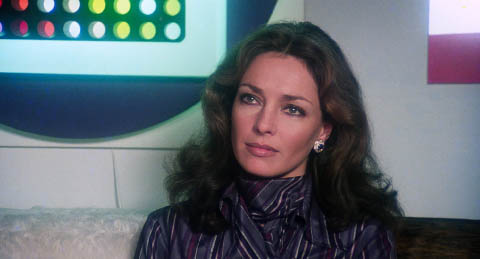
It’s all very dialogue-heavy until over half way, but things are so intriguing and there’s a twist every 15 minutes or so, so boredom is averted unless you really are crying out for lots of elaborate killings. Virginia is convinced that the skeleton she discovers is that of the woman in her vision, but the police charge her husband Francesco Ducci with the killing and the body turns out to be that of an old ex-girlfriend of his. Virginia, determined to exculpate her husband, contacts her ex-boyfriend Luca Fattori, a researcher of psychic phenomena, and his investigation eventually leads to the wealthy Emilio Rospini, who may be the true culprit. Much mystery revolves around a magazine that Virginia buys, and which seems identical to one she saw in her vision, eventually revealing that Virginia was actually seeing into the future rather than the past, so she now has to try to prevent a murder from happening. To throw viewers off the track, the script and Fulci have to do a lot of clever things: he often shows clues but omits one important detail, shows other clues which actually don’t end up mattering very much and, although the film is mostly from Virginia’s point of view, occasionally shows us things she couldn’t have seen. This gives us the impression that we’re learning more than she is and are therefore ahead of her – an impression which is usually false! This mostly succeeds, meaning that it really is a punch-to-the-gut shock when the revelation of what is really happening reveals itself. Fulci seems to want us to expect somebody to be saved from death, but doesn’t allow this to happen, and the film is all the better for it, especially in the way it gives us a cheeky variant on the ending of The Black Cat, a watch’s musical chime taking the place of a cat.
This may very well be the best shot of all of Fulci’s films, at least out of the ones I’ve seen [which is most of not quite all]. Cinematographer Sergio Salvita ensures that the camera never stops moving, something which aids the viewer’s disorientation immensely without it seeming too obvious. Aerial shots add an oddness to some of the well chosen interiors and enhance the feeling of characters unable to escape the destiny that’s been chosen for them, trapped in a macabre game. A simple conversation in an art gallery is made ominous because the characters have been shot mostly in silhouette. And, while Fulci doesn’t feel the need to add any more suspense scenes than the story absolutely requires, he does treat us to one truly edge-of-seat sequence set in a dilapidated church where Virginia is hiding from somebody who we assume is the killer. The use of space, shadow and silence is really masterful and ought to be shown to those who dismiss Fulci. When he was good, which he consistently seems to have been for almost two decades, from the mid ’60s to the early ’80, he was very good. Fulci wasn’t Bava and couldn’t make something out of almost nothing; it’s obvious that it was tiny budgets and therefore equally tiny shooting schedules, plus declining health, which caused most of his later work to not be of much quality – though there’s still some interesting stuff in there, signs of the very good filmmaker who once was.
The idea of having most of the Italian cast members speak English with their actual voices is a very commendable one and I don’t know why other films of a similar nature didn’t do the same, though there’s the odd moment where it’s hard to understand everything that is being said due to the accents, a bit of a problem in a movie where new information is being given out all the time. The second most familiar face is probably that of Gabriele Ferzetti, best known for his small but important roles in Once Upon A Time In The West and On Her Majesty’s Secret Service; he may by the killer, and he may not be the killer. Ida Galli, better known under her pseudonym Evelyn Stewart, manages to make a strong impression as Virginia’s vulgar sister-in-law despite being obviously dubbed by someone else. Also very good is the score, largely played on a carillon, by Franco Bixio and Fabio Frizzi who would return to work on some of Fulci’s greatest hits. The watch chime theme later turned up in Kill Bill but perhaps even more memorable is a clock-like piece that evokes a sense of people moving inexorably to their fate. Several other diverse tracks including even some muzak make up the rest of a nicely diverse soundtrack that’s also quite different from typical giallo scoring of the time. The Psychic never quite reaches excellence, but is still an extremely well made effort in which the director manages to restrain himself considerably in terms of brutality and blood, yet still come up with something which is very chilling and even downright harrowing in its final act. It’s probably a film that many critics would praise very highly if it were better known and not from a director chiefly associated with gruesome horror movies [even if actually he did a great deal else]. Why is it that I get the feeling that this may be remade soon and that the result will get a positive reception?
Shameless tell us that this new edition of The Psychic is exclusive as it has been extensively further restored from new 2K-scanned material. I don’t own any of the previous Blu-ray editions, but can say that Shameless’s release looks infinitely superior to Severin’s Region 1 DVD release. The level of detail is greatly increased and the intricate, colour-coded design of some of the interiors can really be admired, yet the intentional softness of the photography is retained. Skin occasionally looks a little too pink but there’s no black crush and no visible print damage. Overall this is a good, well balanced restoration.
SPECIAL FEATURES
‘TOUCHING FATE’ – A new exclusive interview of Antonella Fulci about ‘The Psychic’
‘DADDY DEAREST’ – An interview with Antonella Fulci about her father Lucio Fulci
Restoration process for ‘The Psychic’ – showing different stages
‘ESCAPE FROM DOOM’ – An interview with writer Dardano Sacchetti on working with Fulci
‘BEHIND THE WALL’ – An interview with Fabio Frizzi on scoring ‘The Psychic’ (the music later used by Tarantino)
I didn’t get a chance to look at the special features but they seem to be all new, none of them ported from previous releases. ‘The Psychic’ is prime Fulci and an engrossing, clever thriller in its own right. Highly Recommended!




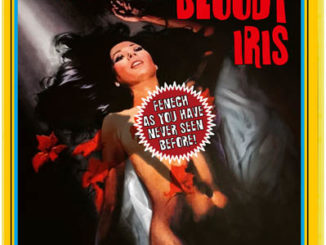

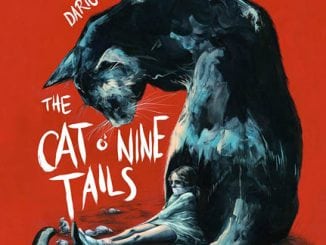
Be the first to comment